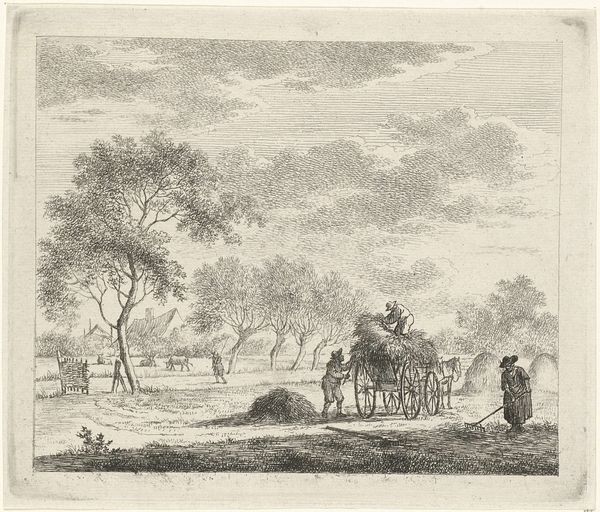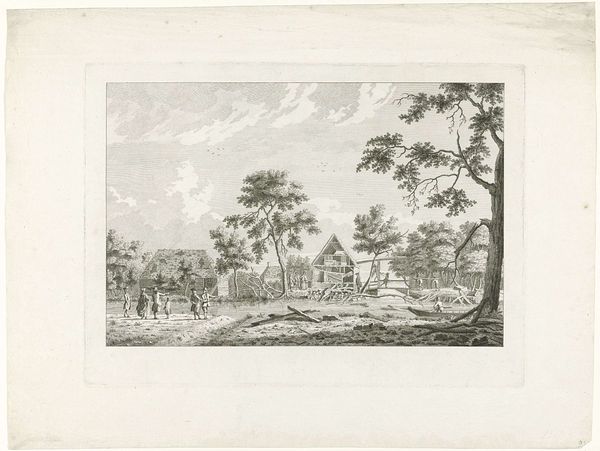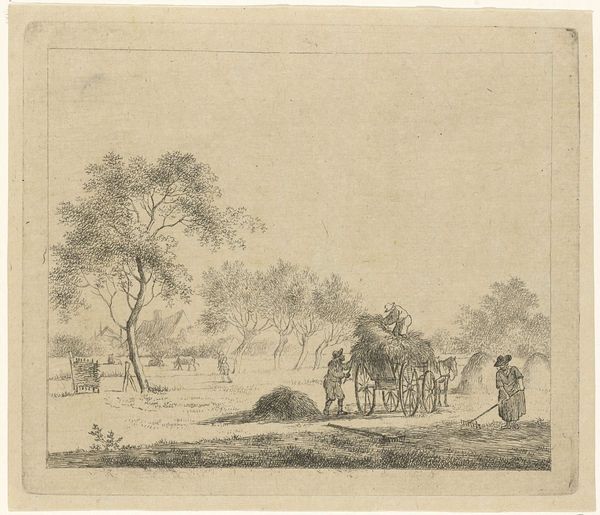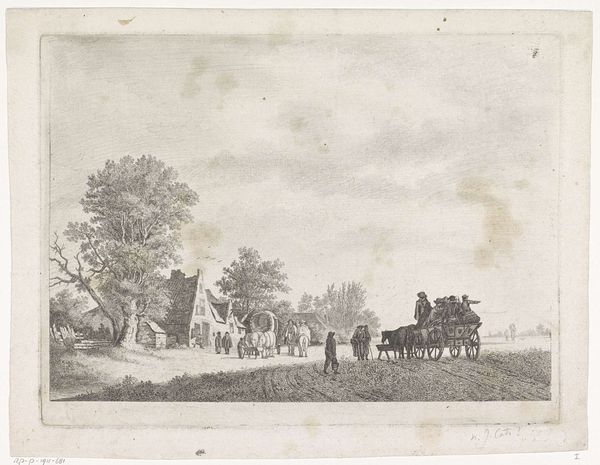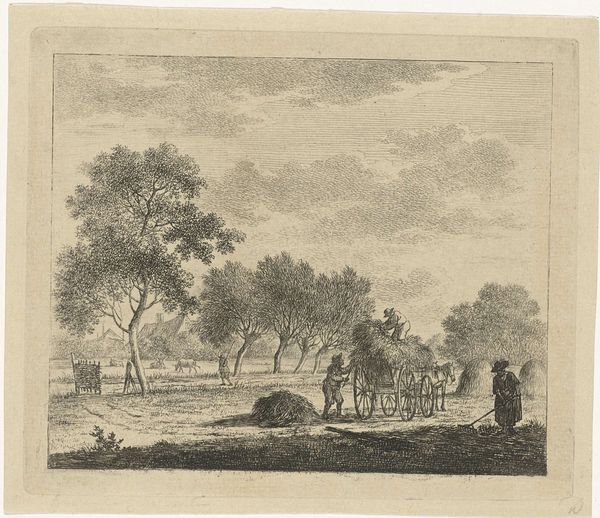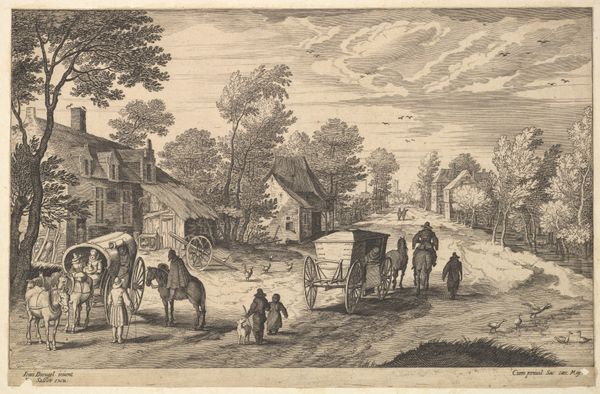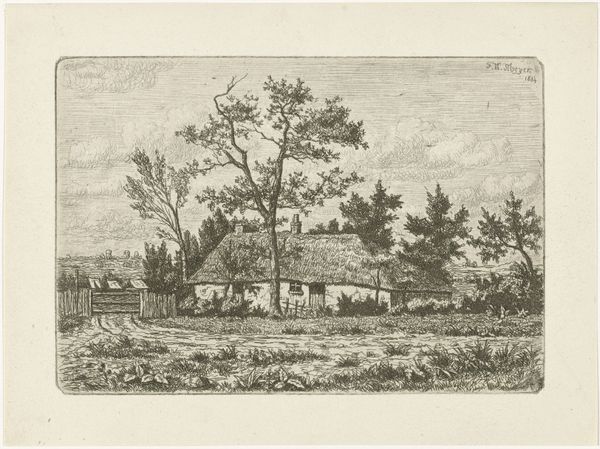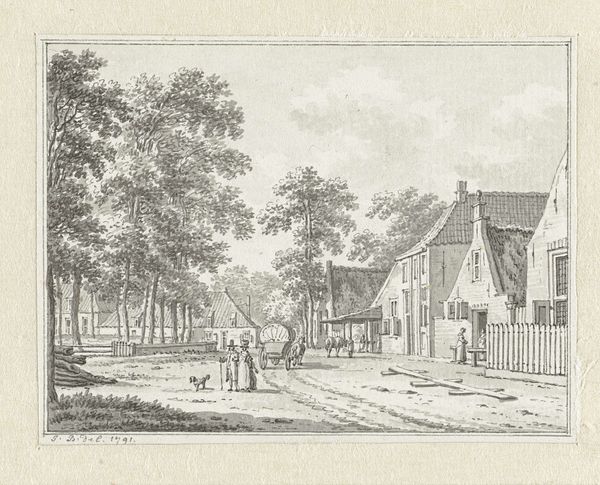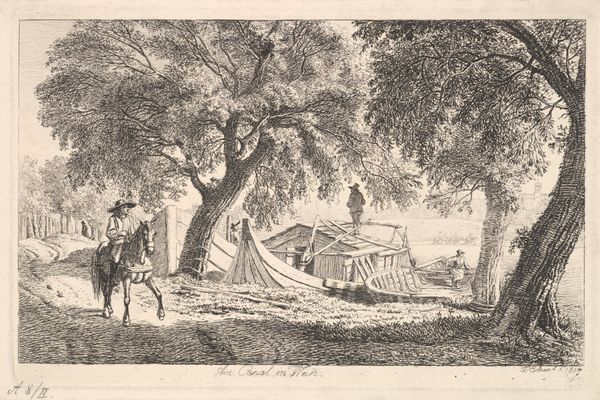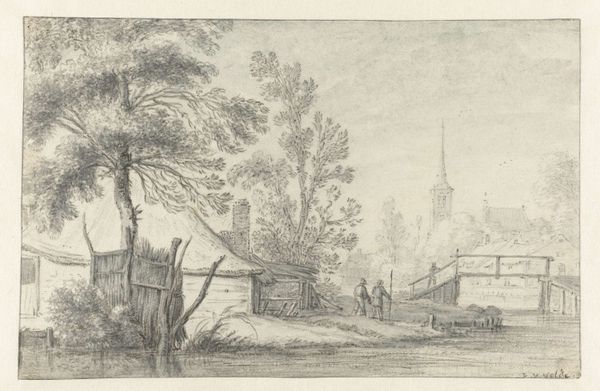
drawing, engraving
#
drawing
#
landscape
#
engraving
#
realism
Dimensions: height 254 mm, width 330 mm
Copyright: Rijks Museum: Open Domain
Curator: This is Joannes Bemme's "Soldiers with a death carriage on a country road," an engraving made sometime between 1831 and 1841. It’s held here at the Rijksmuseum. What's your first impression? Editor: It’s somber. The grey landscape and the tired figures of the soldiers give the sense of great despair, while it has this bucolic rural atmosphere on the other hand. Curator: It certainly evokes a sense of weariness. We see soldiers on horseback and foot accompanying a cart, presumably carrying the dead, along a rural path. Bemme produced this piece during a tumultuous time. Consider the social implications of representing such scenes—what does it mean to portray the costs of war so directly? Editor: Right. What does it do? You've got a romantic notion of warfare challenged by the human cost shown in this plain manner. This engraving almost acts as an act of protest against military violence of the state through a focus on a human drama. Curator: It also makes one think about the power dynamics. While artists during wartime were often tasked with celebrating military victories, this work focuses on the aftermath and consequences. The choice to depict the literal burden of war humanizes these figures and questions traditional heroic narratives, shifting the viewer's focus. Editor: And looking at those figures you see people of color, in this depiction they carry this cart through an area with little sign of economic output in that era. It begs the questions of how their racial identity plays in with themes of marginalization in times of great geopolitical struggles. Curator: That brings up an interesting angle. In viewing Bemme's landscape, how do you consider his social positioning relative to those he portrays and the audience for whom it was produced? Editor: Precisely. The question of the gaze becomes pertinent. We need to consider the viewers of this work. Does it provide an empathetic representation, or does it serve to perpetuate existing inequalities? Curator: A complex work indeed. Considering the socio-political dynamics provides depth. Editor: Absolutely, seeing through that intersectional lens shows how pieces like this act as documents and testaments to broader social problems of that moment in history.
Comments
No comments
Be the first to comment and join the conversation on the ultimate creative platform.
